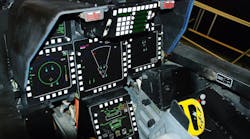By Chris Emslie, Managing Director,
Fibercore Limited, Southampton, England
It is getting to that time of year again, when we in the specialty-optical-fiber market keenly anticipate the event that will provide a brief glimpse of the year ahead —OFC 2004 (Optical Fiber Communication Conference and Exposition, which was in late February in Los Angeles). It was at OFC 2000 in Baltimore, at the height of the telecommunications boom, that we experienced one of largest number of attendees — almost 40,000. Since then, however, the industry has certainly taken a battering from telecom's "nuclear winter." While this has knocked confidence and visitor numbers to OFC, the exhibition is still seen as the benchmark for forecasting what will, and more recently, what won't happen in the year ahead.
The analysts got it wrong
The specialty-fiber market is at a very interesting stage, due in part to "guesstimates" forecast by industry analysts during the boom, which set expectations high for many within and outside the industry. We may never know the precise reasons for this profound error, but it seems likely that double counting, projections of consistent and continual growth rates, together with a basic lack of understanding of the market all played a part in analysts predicting, incorrectly, that the industry was set to be worth around $1.4 billion by 2007, driven by compound annual growth rates of 40 percent or more.
As any specialty or niche marketer will tell you, business volumes are typically dominated by a relatively small number of relatively large customers and with quantities often too small to make true second sourcing viable. The net result is that companies chase the same business — that's why domination of a niche isn't just a good thing, it's essential. So if you size your market simply by adding up the forecasts of the main players without crosschecking against the market, you will get a serious overestimate every time.
It is interesting to note that while Fibercore Limited has 100 percent share of the European gyro fiber market, more than 60 percent in the U.S., and a strong position in Japan, at no time did analysts approach the company to obtain our view of the market's future.
The analyst prophecies and the promise of a virtually virgin market with such a high net worth captured the attention of venture capitalists who, with the intention of making a quick buck, injected money into any businesses looking to enter the industry. Most of these startups did not seem to plan or expect to produce anything and looked forward to being acquired by much larger firms for their technology as the market continued to skyrocket. When this did not happen, many of these companies were left with surplus stock and a pressing need to generate immediate cash flow — once cost and price part company in this way, damage to the market is an inevitable result.
Despite their lack of experience in the volume manufacture of special fibers (1000 kilometers per annum is huge in specialty terms), these companies have naturally targeted the largest of current opportunities in fiber-optic gyro and acoustic (hydrophone) segments with the result that market prices have been driven down. A natural result of market conditions and the effect of supply outstripping demand, I hear you cry, but no, this is not quite so.
Ultimately, while volume is important for the success of vendors (it is possible to sell fibers at several hundred dollars per meter and lose money every time —believe me!), and as anyone working in aerospace and defense will tell you, fiber performance and longevity are key requirements for specialty fibers. Fibers developed in haste will not have been subjected to extensive testing to ensure reliability and lifetime performance. Without genuine experience of volume manufacture to high specifications and, more importantly, tight tolerances, the future price promises made by the new entrants become little more than empty guesstimates.
As these new companies continue to flood the market with surplus inventory, the danger is that specialty optical fibers will become commoditized — thought of as little more than minor variants of the telecommunications fiber that now sells for two or three cents per meter. Without exception and irrespective of current conditions, all major consumers of specialty fibers need a secure and consistent supply of quality product above all else.
Unfortunately, if specialty fiber prices slide to commodity levels, I fear that many of these companies will not survive long enough to fulfill these fundamental needs. Furthermore, these new entrants into the industry will have set the market's expectations of reduced costs and low-performance fibers for years to come. I believe the legacy of this approach will outlive many of its creators and detrimentally affect the rest of the market in the process.
Fibercore Limited's experience has shown that the longer a company has been in operation and the greater its understanding of the technologies of its target markets, the greater the consistency and the higher the quality of the product. In the current environment, however, the market does not have a great deal of supplier loyalty and as prices are driven lower, some purchasers are sourcing products with cost as the only specification. Quality and performance, it would appear, are now of secondary importance — a troubling trend.
Fibercore Limited has the experience to know that it takes at least 10 years to take a technology from first concept to commercial success, even 20 years is not unknown. The erbium-doped fiber amplifier (EDFA), the rise of which is generally considered to have been meteoric, took seven years to achieve its first real commercial implementation and another seven to become a fully engineered volume product. In 20 years, the fiber gyro has achieved a market penetration of less than 10 percent. A direct result of misleading analyst predictions and a handful of industry "pundits" caused some of the new businesses to enter the industry believing that the whole process could be completed in less than three years.
Despite the nuclear winter that has beset the telecommunications industry in recent years, I do believe that there are some developments in the fiber market as we see parts of the industry maturing. Where telecommunications components manufacturing is concerned, there is certainly some growth in China. In recent years, the manufacture of these components has been moving toward areas with low labor costs and away from Europe and United States. During a visit to China in 2002, I saw 13 EDFA manufacturers in South and Central China with hardly any business. Still, following a recent visit in October 2003, I met at least five manufacturers who won new business or were on the verge of being awarded new contracts. These suppliers were historically producing components for use in the United States, Europe, and to fuel the Japanese data-communications boom. More recently, an increasing fraction of production appears to be for indigenous use.
Defense post-Sept.11
The other significant market for specialty optical fibers is for applications in the defense and homeland security industries. Buyers within this industry tend to be conservative and prefer to purchase from established companies, unlike the now fickle telecommunications market. This is mainly due to product development and service life cycles that can easily exceed 20 years and a requirement for continuous supply that looks unfavorably on newcomers. I remember when telecommunications was a similarly challenging proposition some 10 to 15 years ago — until the "old boys" network was challenged and successfully broken.
Most startups have a very old-fashioned view of the defense market, believing, wrongly, that we are still living in the Reagan era when unlimited budgets were at the disposal of the U.S. Department of Defense for the likes of the "Star Wars" program. During the Cold War, the United States faced one large consolidated enemy and the weapons of choice were long-range intercontinental ballistic missiles as opposed to the precision-guided weapons systems we have now. Post-Sept. 11, with the emphasis now on homeland security and a more intangible enemy than during the cold war, budgets are a great deal more focused.
The current defense philosophy is to minimize casualties among civilians while keeping soldiers out of harm's way. Therefore, the need for highly accurate "smarter" munitions has never been greater. It is thought that in the first Gulf War, only around 20 percent of the missiles were guided. During the recent conflict in Iraq almost all the missiles were smart munitions. Fiber-optic gyroscopes are ideally suited for this applicaton due to their compact size, reliability, and G-insensitivity.
Within the next five to ten years, it is likely that much of the low-end, nonmilitary (i.e., that which demands neither sub-10-degree-per-hour precision nor G-insensitivity) market is satisfied with the MEMS-based (microelectromechanical systems) coriolis gyro. The "holy grail" for FOG may then be to offer a viable and reduced-cost alternative to the ring-laser-based guidance systems seen in the tactical market segment within airborne and seaborne applications. The reward for the gallant knight who finds the "grail" would be a 20-fold increase in orders — even within a static market.
Beyond OFC 2004
To sum up, the telecommunications industry is active in certain niches, but the movement seems to be generally downward at the current time. In defense, the focus for fiber and components used in tactical deployments must remain on quality and performance instead of cost and volume if a device is to meet its operational requirements. New entrants into the industry may cause the commoditization of specialty single-mode fibers, and volume production and cost may take precedence over fitness for purpose and performance, but this model is destined to fail in the long term. It will, I have no doubt, be the demise of those who created it.
Most of the "seasoned" players in the specialty-fiber market fail to understand why venture capitalists can behave like children showing interest in ice cream — only wanting the flavor of the month. It is vital that analysts make forecasts that are not only accurate but also realistic if the specialty-fiber market is to start to lift out of the downward curve. We have seen this mistake made before in 2000 when analysts first predicted that the market was worth $200 million — it may have actually been worth $100 million maximum.
When multiplying percentages to make predictions for compound growth, it is easy to loose touch with reality. Needless to say, accurate forecasts about the market have to be made to enable companies to make the correct strategic decisions faster at what is a crucial time. Analysts need to keep a closer eye on the market and consult industry insiders. For some companies this could be a matter of life or death.


